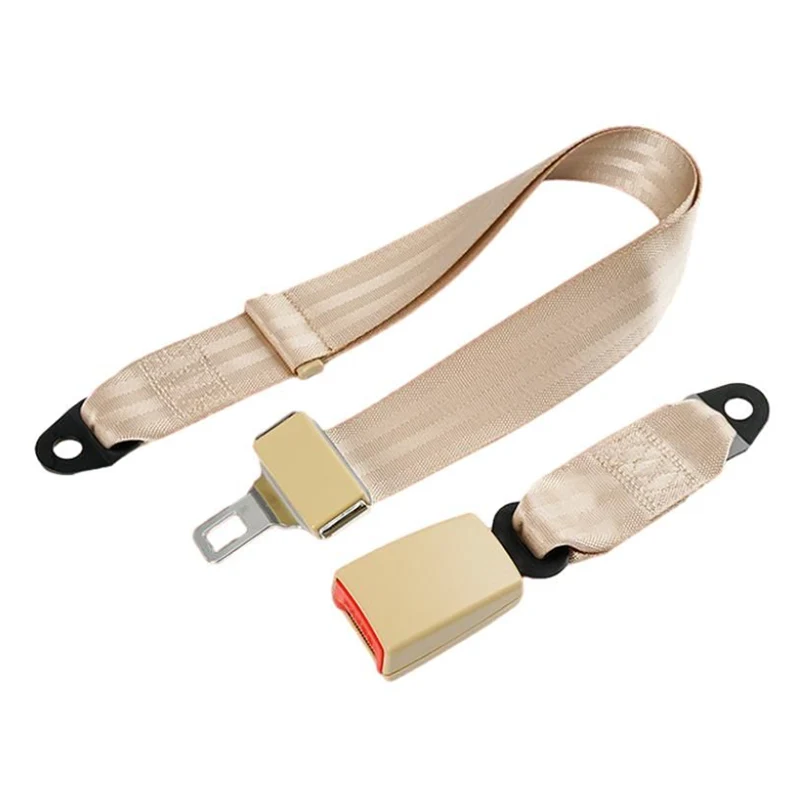What's the history of seat belts?
2025-05-07
In today's cars, seat belts have long been one of the most basic configurations. Pull it when you get in the car and insert the buckle. Many people have become accustomed to it. But do you know? This simple belt has actually gone through more than a century of development before it finally became what we are familiar with now.Today, let's review the "past and present" of seat belts.
1. The earliest prototype: just "tying up" people
The earliest concept of "seat belts" appeared on airplanes, not cars. As early as the early 1900s, the speed and stability of airplanes were very poor. In order to prevent pilots from being thrown out of the cabin, people installed belts on the seats to tie up their bodies. This was the original prototype of seat belts.
In the automotive field, it was not until the 1930s that doctors recommended installing seat belts for racing drivers to reduce the risk of injury. But in that era, the public was not interested in seat belts. Many people even thought it was "in the way" and "uncomfortable."

2. Breakthrough: The birth of the three-point seat belt
The safety belt has truly become a standard feature of modern cars, thanks to one person - Nils Bolin, an engineer from Sweden. In 1959, he designed the most common three-point seat belt for Volvo: one end is fixed to the shoulder, and the other end is wrapped around the waist to form a three-point fixation. This design is simple, comfortable, and highly protective, and it quickly became an industry standard.
What is more worth mentioning is that Volvo did not apply for an exclusive patent, but opened the invention free of charge so that car manufacturers around the world can use it. It is this open attitude that has saved countless lives.
3. From optional to mandatory: law promotes popularization
Although the three-point seat belt technology has long been mature, it was not until the 1970s that most countries began to legislate to force vehicles to be equipped with seat belts and require drivers and passengers to use them.
Australia was the first country to legislate to force the use of seat belts, followed by the United Kingdom, the United States, Japan and other countries. In 1993, my country began to enforce seat belts for front-seat passengers, and later gradually extended it to the back seats.
From "no one uses it" to "everyone must use it", this is the result of the joint promotion of laws and safety awareness.
4. Continuous evolution of technology: from belts to intelligent systems
The seat belts of modern cars are no longer as simple as webbing and buckles. Pretensioners, force limiters, sensors... These invisible technologies allow seat belts to tighten faster and protect the human body more scientifically at critical moments.
Moreover, many models are now equipped with "unfastened seat belt alarm systems". Once the seat belts are not fastened, the vehicle will sound an alarm to remind the driver or passenger to fasten them as soon as possible.
A seat belt, simple and plain, has taken hundreds of years to enter thousands of households. It does not have a high-tech appearance, but in every possible danger, it protects us in the simplest way.
It has evolved from a "restraint" for pilots to a "talisman" for drivers, and now to a "safety guardian" for everyone's travel. Behind this is the wisdom of countless engineers, the efforts of countless policy promotions, and the lessons learned from countless accidents.
We are looking forward to your buy Seat Belt from our company made in China - Chuanghecheng Metal Technology. Our factory is a Seat Belt manufacturer and supplier in China. You are welcome to buy our high quality products.Visit our website at www.chcseatbelt.com to learn more about our products. For inquiries, you can reach us at chuanghechengkeji@163.com.




